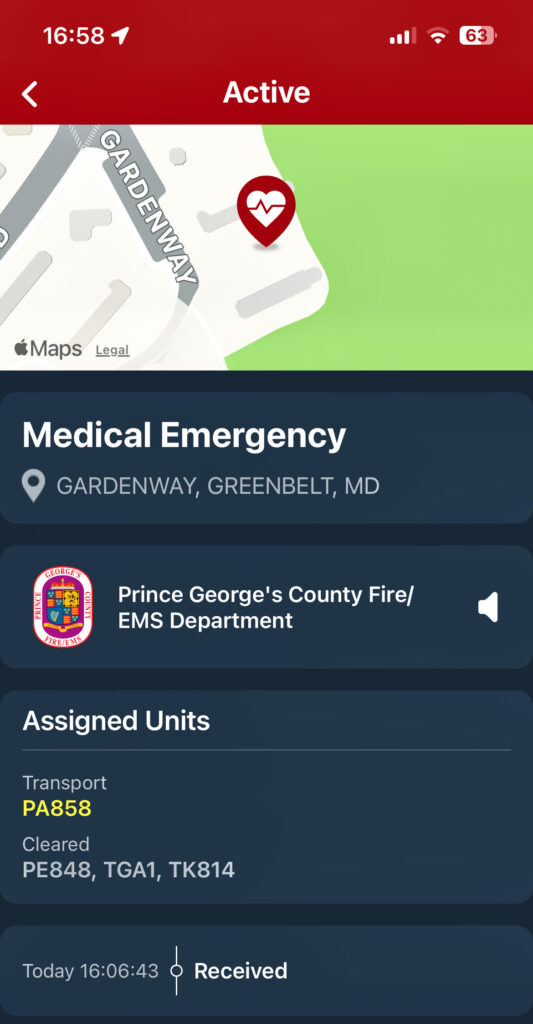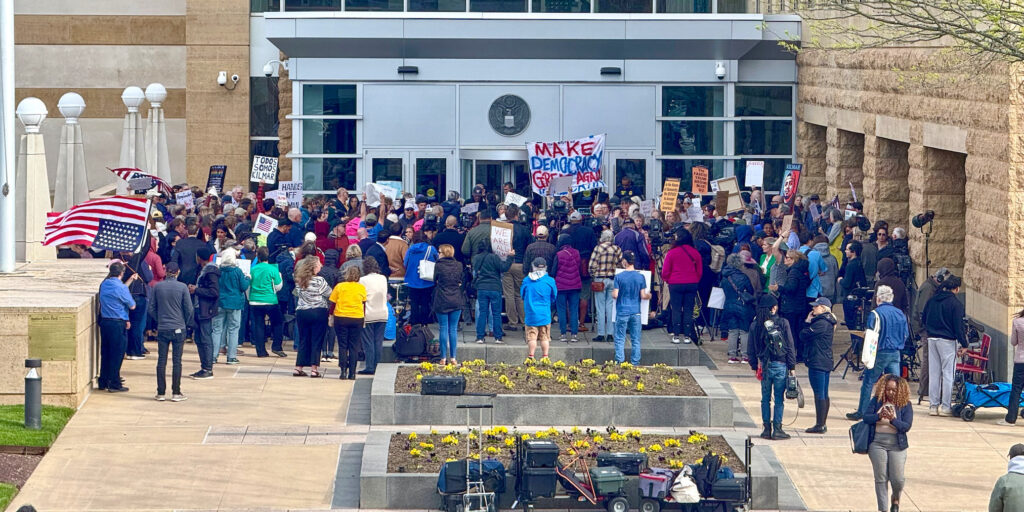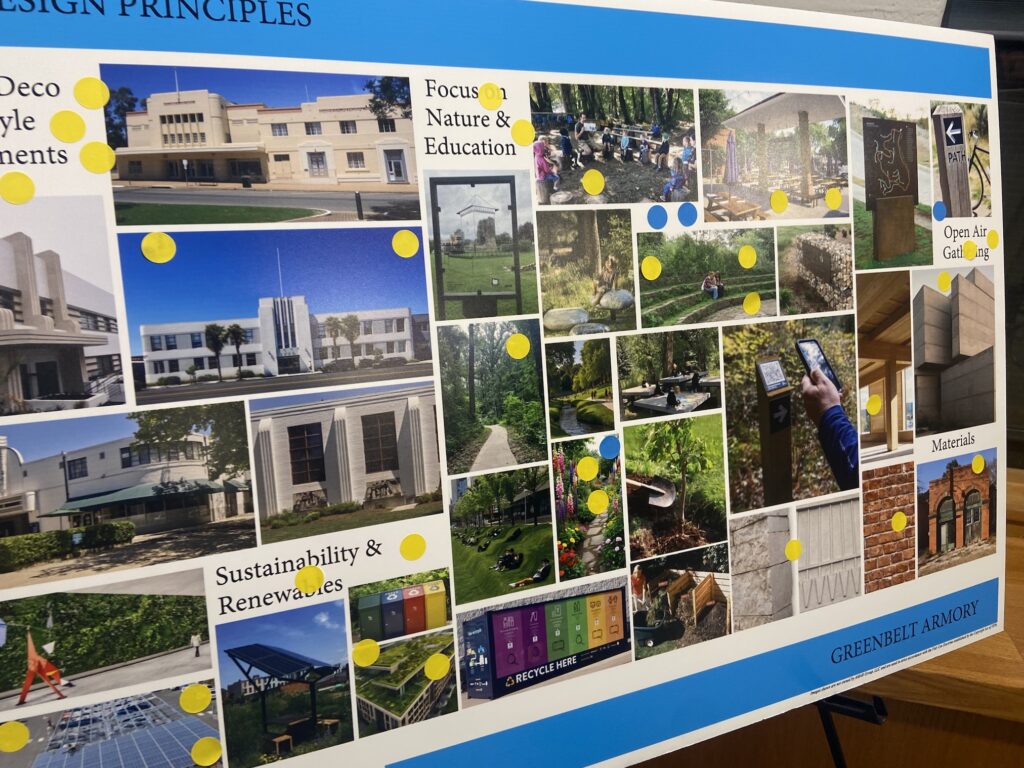(Editor’s Note: The News Review had hoped to be able to report on this incident with access to official documents. Following our Public Information Act (PIA) request, the Prince George’s County Fire Department (PGFD) was required under the Act to provide records or respond with a decision about them within 30 days. Despite our further outreach and reminders, at press time, it was 42 days since the PIA was filed. This incident was one of three cited as cause for serious concern in the City of Greenbelt’s open letter to PGFD Chief Tiffany Green on October 2.)
On September 18 a GHI contractor reportedly went into anaphylactic shock after he was stung by bees while working as an exterminator at a unit on Gardenway. The man died later at the hospital. PGFD Director of Public Information Alan Doubleday told the News Review that two ambulances responded to the call for emergency medical help – one taking four minutes and the other taking seven minutes. The neighbor who called 911 and stayed on the call until an ambulance came into sight shared her phone record with the News Review, showing a call duration of eight minutes.
On September 18 Chrissy Voigt was at her home on Gardenway when she saw the contractor spraying for bees in her neighbor’s yard. On her home camera, she first noticed him swatting around his face, then she saw him in the front, kneeling down and seeming to drop paperwork. By the time she reached him he was lying face down in the dirt and having a hard time breathing, recalled Voigt, who called 911. While she was on hold, Voigt went across the court to her neighbors, Amy and Kevin Carpenter-Driscoll, to ask for their help. Voigt had time to make it back to the man before her call was picked up. By the time the Carpenter-Driscolls joined her, he was unconscious.
Difficulty Understanding Address
Once her call was answered the telecommunicator struggled to understand the GHI address. “It felt to me like it took quite a long time for her to understand our address. I had to repeat it multiple times in multiple different ways for her to understand [the unit number and letter].… So that was the part that made me the most nervous, that it seemed so hard for them to understand our address structure and figure out how to dispatch,” says Voigt. “I was in a heightened state because it was very distressing,” she said, recalling how clear she tried to be about the address. “But … delivery people get here all the time. We get food deliveries. This is not hard to understand where we live. I do understand that our address structure is so different from other communities.”
Aid
As the neighbors on Gardenway awaited the ambulance they tried to help the man, whose name they still don’t know. “With the instruction from the dispatcher, we were able to roll him over and get him flat, and then she walked us through chest compressions,” said Voigt. He was breathing but it was labored and he was foaming at the mouth, she said, leading her to believe he’d been stung multiple times. “[His] symptoms indicated anaphylaxis, between extreme swelling of face and neck, a lot of redness,” said Amy Carpenter-Driscoll. When medics arrived they assessed cardiac rhythm using an AED, loaded him onto a stretcher and intubated him in the ambulance, according to the neighbors.
The man reportedly died in hospital a few days after the incident. “That was very upsetting to hear,” said Carpenter-Driscoll, who had hoped he’d be all right once he was able to get treatment, since anaphylaxis is treatable. “I feel confident that as neighbors we did what we could for him, so that helps, but it just is a sad situation for him and for his family,” said Voigt.
Response Time
Voigt’s call record shows the 911 call began at 4:06 p.m. PulsePoint (an app that shares some emergency call details) showed a medical emergency at 4:06:43. According to Doubleday, two ambulances were dispatched at 4:09 p.m. and the swiftest arrived after four minutes, at 4:13 p.m. (Paramedic Ambulance 858). PGFD counts the response time from when a vehicle is dispatched. If Doubleday’s dispatch time is correct, the ambulances were dispatched at least three minutes after Voigt called 911. There’s also a one-minute difference in recorded arrival times between Voigt’s call end-time and Doubleday’s statement of arrival time.
Carpenter-Driscoll says she understands PGFD tracking response time from dispatch, but the time on hold, explaining the address and then possibly waiting for an available engine to be dispatched, “even if that’s an additional minute, two minutes, that all adds up in terms of the time that the patient is waiting for care,” she says. “I can appreciate them using that calculation, but at the same time, for people experiencing an emergency and for people calling and waiting, those are two different things, and what matters to the patient at the end of the day is, how fast did I get care from when I started having an emergency. And I don’t think that’s something we should overlook in these conversations,” says Carpenter-Driscoll.
Another Case
In September the News Review interviewed Steve Edmonds, whose life was saved when Greenbelt Police responded when he sliced open an artery in an accident in Greenway Center. In that case, Edmonds said he was watching his blood spurt out as the person who called 911 for an ambulance was fielding numerous questions, so he asked a nearby man to call the police instead. Greenbelt Officer Joshua Forney arrived and applied a tourniquet that saved Edmonds’ life. “If he hadn’t have got there I would have died,” said Edmonds. Indeed, at the hospital he was told he’d have died waiting for the ambulance. (See the September 12 issue for more on that emergency and Officer Forney’s Lifesaving Award.)
In addition to reaching out to PGFD, the News Review has contacted Prince George’s County’s 911 Office by phone and by email to request an interview about call times and staffing, but received no response.
On October 18, in a letter to Greenbelt’s Mayor Emmett Jordan, PGFD Chief Tiffany Green wrote that since the removal of Greenbelt’s career firefighters on June 1, the average response times for Basic Life Support calls from this coverage area rose from eight minutes 44 seconds to nine minutes 12 seconds. Response time for Advanced Life Support calls increased from six minutes 23 seconds to seven minutes 19 seconds. For more on the average response times between June 30 through October 12, see the October 24 issue of the News Review.




